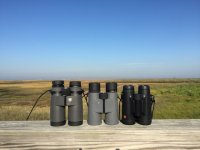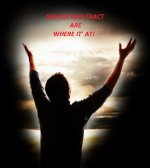Steve C
Well-known member
I do believe there's at least one person on this thread that can offer up a real world (experience based) observation on that one....
I'm going out on a limb here. With Maven and Tract, we have two companies with the same business model, using the same OEM for the source of their optics. The Maven binoculars under this scenario are more expensive than the Tract models. It simply stands to reason the Maven should have some edge here. That is an assumption and we all know what assumptions are
I have no doubt from my interactions with JGR and from his comments on the Tract that they are as good a binocular as most people need to fill their actual use needs. However, I cannot see there is any way that the Tract can be better than the Maven B1 I have (or the B2 and the B3 for that matter). I do not think it is in the cards. It may very well need an extended test over a tripod and a headache to declare a winner, but my initial wager would be for the Maven. I have been wrong before and may be wrong again. That is my opinion only and it may last as long as I need to get a Tract in my hands.
Which to choose comes down to the expendable income of the user.
Edit...Oops, I see I copied the wrong post...






